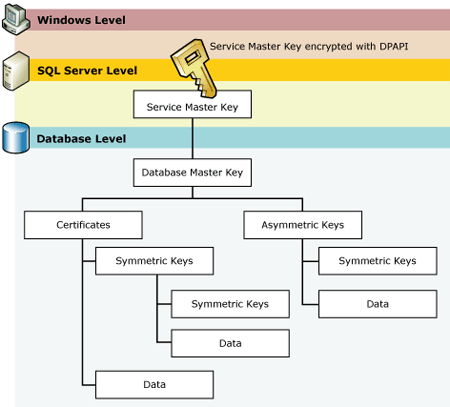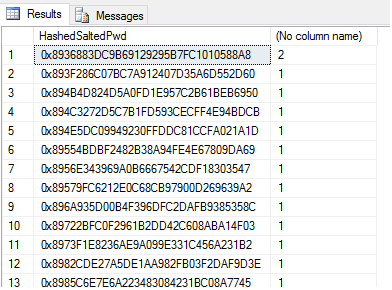
-->
Both have produced the output 0x640AB2BAE07BEDC4C163F679A746F7AB7FB5D1FA. SELECT HASHBYTES('SHA1', CAST('Test' AS VARCHAR(100))); However, if the collation is different, the output will be different. In terms of column definition, the output should be.
APPLIES TO: SQL Server Azure SQL Database Azure Synapse Analytics (SQL DW) Parallel Data Warehouse
The CHECKSUM function returns the checksum value computed over a table row, or over an expression list. Use CHECKSUM to build hash indexes.
Syntax

Arguments
*
This argument specifies that the checksum computation covers all table columns. CHECKSUM returns an error if any column has a noncomparable data type. Noncomparable data types include:
- cursor
- image
- ntext
- text
- XML
Another noncomparable data type is sql_variant with any one of the preceding data types as its base type.
expression
An expression of any type, except a noncomparable data type.
Return types
int
Remarks
CHECKSUM computes a hash value, called the checksum, over its argument list. Use this hash value to build hash indexes. A hash index will result if the CHECKSUM function has column arguments, and an index is built over the computed CHECKSUM value. This can be used for equality searches over the columns.
Hash In Sql
The CHECKSUM function satisfies hash function properties: CHECKSUM applied over any two lists of expressions will return the same value, if the corresponding elements of the two lists have the same data type, and if those corresponding elements have equality when compared using the equals (=) operator. Null values of a specified type are defined to compare as equal for CHECKSUM function purposes. If at least one of the values in the expression list changes, the list checksum will probably change. However, this is not guaranteed.Therefore, to detect whether values have changed, we recommend use of CHECKSUM only if your application can tolerate an occasional missed change. Otherwise, consider using HASHBYTES instead. With a specified MD5 hash algorithm, the probability that HASHBYTES will return the same result, for two different inputs, is much lower compared to CHECKSUM.
The expression order affects the computed CHECKSUM value. The order of columns used for CHECKSUM(*) is the order of columns specified in the table or view definition. This includes computed columns.
The CHECKSUM value depends on the collation. The same value stored with a different collation will return a different CHECKSUM value.
CHECKSUM () does not guarantee unique results.
Examples
These examples show the use of CHECKSUM to build hash indexes.

To build the hash index, the first example adds a computed checksum column to the table we want to index. It then builds an index on the checksum column.
Sql Server With Clause
This example shows the use of a checksum index as a hash index. This can help improve indexing speed when the column to index is a long character column. The checksum index can be used for equality searches.
Index creation on the computed column materializes the checksum column, and any changes to the ProductName value will propagate to the checksum column. Alternatively, we could build an index directly on the column we want to index. However, for long key values, a regular index will probably not perform as well as a checksum index.
See also
CHECKSUM_AGG (Transact-SQL)
HASHBYTES (Transact-SQL)
BINARY_CHECKSUM (Transact-SQL)